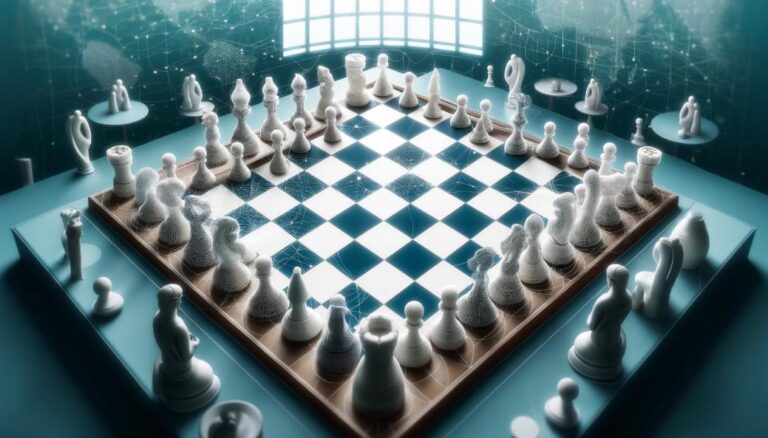Introduction to Sacrifice in Chess
In the game of chess, sacrifices are considered to be one of the most powerful and strategic moves that a player can make. Sacrifices involve willingly giving up a chess piece, usually in order to gain a positional or tactical advantage over the opponent. Sacrifices require careful planning, calculation, and a certain level of risk-taking. In this article, we will explore the concept of sacrifice in chess, and how advanced tactics can be used to win a game through sacrificing.
Understanding Sacrifices
Before delving into advanced tactics for sacrificing, it is important to have a clear understanding of what sacrifices are and why they are made. Sacrifices mainly fall into two categories: material or positional. Material sacrifices involve giving up a chess piece for nothing in return, while positional sacrifices involve giving up a piece in order to gain a better position on the board. Sacrifices can also be used as a means of surprising the opponent and throwing them off their game.
One of the main reasons for making sacrifices in chess is to gain a tactical advantage over the opponent. This can include gaining control of a specific square, creating open lines for an attack, or forcing a weakness in the opponentâs pawn structure. Another reason for sacrificing is to disrupt the opponentâs development or destroy their defensive setup. Sacrifices may also be made to distract the opponent from a critical area of the board, or to divert their attention to another part of the board.
It is important to note that not all sacrifices are equal. Some sacrifices may be objectively sound and lead to a clear advantage for the player who made them, while others may be more of a gamble and require precise calculations and accurate predictions of the opponentâs moves.
Types of Sacrifices
There are several types of sacrifices that can be made in chess, each with its own purpose and benefits:
Opening Sacrifices
Opening sacrifices are usually made in the early stages of the game, during the opening phase. These sacrifices are often made to disrupt the opponentâs development and gain control of the center of the board.
An example of an opening sacrifice is the âGambitâ â a popular opening that involves offering a pawn sacrifice in order to gain a lead in development and control over the center squares.
Positional Sacrifices
Positional sacrifices involve giving up a piece in order to gain a better position on the board. These sacrifices are often made in the middlegame, when both players have already developed their pieces and are vying for control of the board.
Examples of positional sacrifices include sacrificing a knight for a bishop to open up a file for the rook, sacrificing a rook to gain control of the seventh rank, or sacrificing a bishop to weaken the opponentâs king-side pawn structure.
Desperate Sacrifices
Desperate sacrifices are usually made in a losing position, when a player has no other option but to sacrifice a piece in the hope of turning the game around. These sacrifices are risky and should only be made as a last resort.
Examples of desperate sacrifices include sacrificing a rook or queen to checkmate the opponentâs king, or sacrificing a piece to create a mating net around the opponentâs king.
Blitz Sacrifices
Blitz sacrifices are made in time-sensitive games, such as blitz or rapid chess, where players have to make quick decisions under time pressure. These sacrifices are often made to create complications and confuse the opponent, as time constraints may lead to mistakes on their part.
An example of a blitz sacrifice is sacrificing a rook on an open file to lure the opponentâs king into a mating net, despite not having calculated the exact outcome of the position.
Long-term Sacrifices
Sacrifices can also be made with a long-term plan in mind. These sacrifices involve giving up a piece and patiently waiting for the opponent to make a mistake or fall into a trap laid out by the sacrificing player.
An example of a long-term sacrifice is sacrificing a piece in the opening to gain control of the center and develop an attack over the next few moves, while the opponent struggles to find a defense.
Tips for Making Sacrifices
Sacrifices require careful consideration and calculation. Here are some tips to keep in mind when deciding whether to make a sacrifice:
- Assess the position carefully and determine if the sacrifice is necessary or justified.
- Consider the benefits and drawbacks of the sacrifice, as well as potential defensive moves from the opponent.
- Always calculate at least two or three moves ahead to ensure the sacrifice leads to a favorable position.
- Use sacrifices as a surprise tactic to throw the opponent off their game.
- Be aware of the opponentâs weaknesses and use sacrifices to exploit them.
Conclusion
Sacrifices are an integral part of chess and can be a powerful weapon when used strategically. They require a high level of calculation, risk-taking and a good understanding of the position. It is important to assess the position carefully and only make sacrifices when they are necessary and lead to a favorable outcome. With practice and experience, players can learn to use sacrifices effectively and gain an advantage over their opponents.






